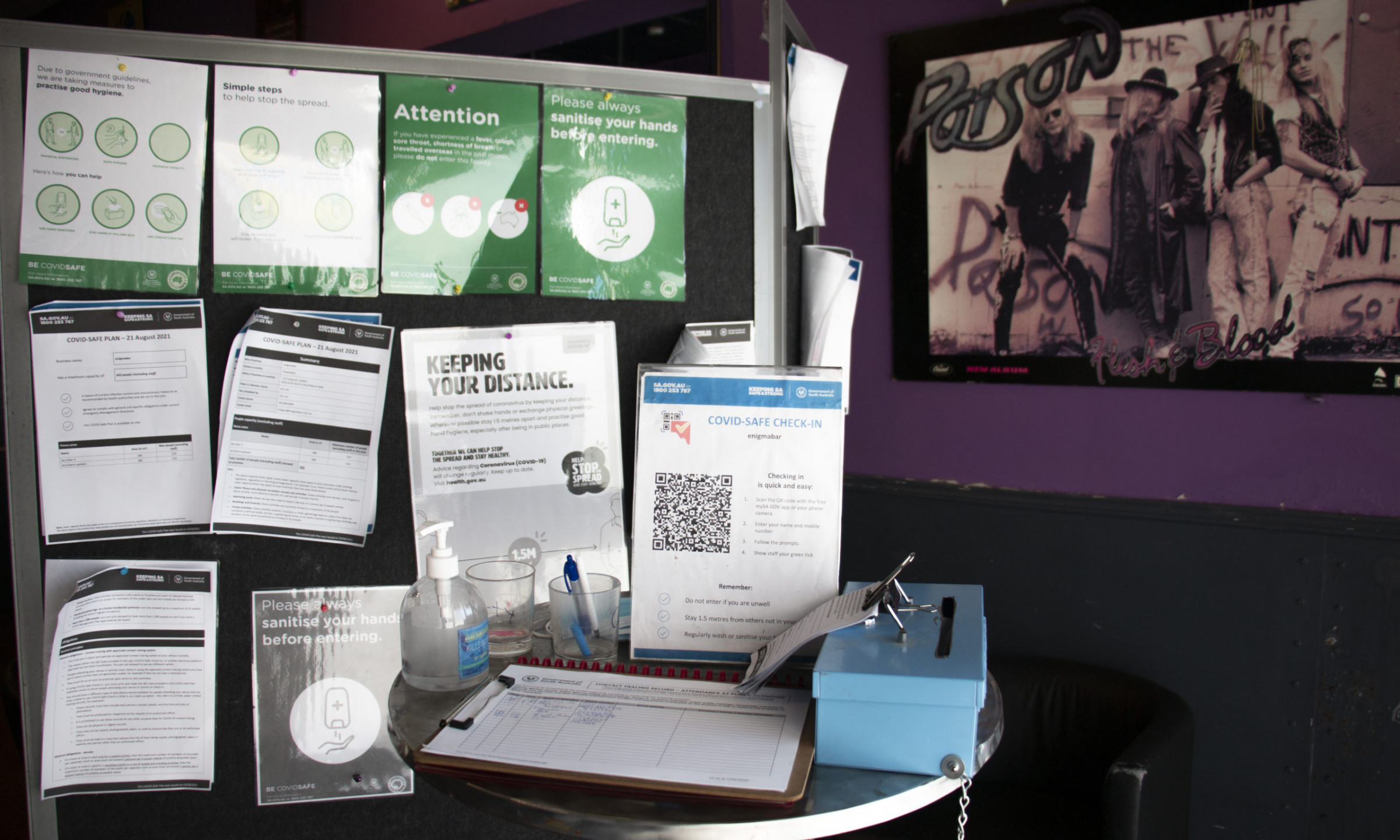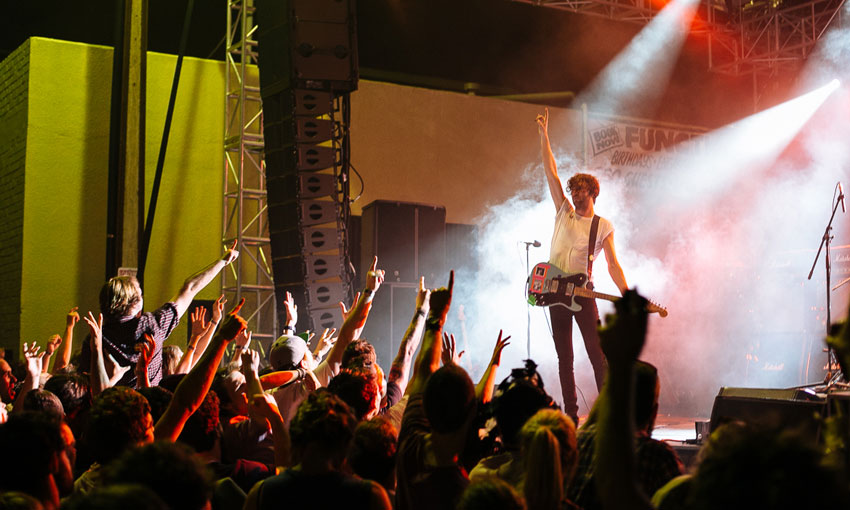Music SA general manager Kim Roberts wants to know how the state government’s roadmap will help the bruised arts and entertainment sector recover from COVID-19.
The head of Music SA wants clarity on the industry’s comeback
Last month, the South Australian government released their highly anticipated roadmap out of COVID-19 restrictions, all of which has been consolidated onto a one-page PDF document.
The MDO Live Music Support Program is offering grants for venues, artists and other affiliates of the live music scene.
Applications close Friday, 19 November 2021.
More information here.
The roadmap outlines that on 23 November, South Australia will enter the second tier of a three-tiered comeback plan.
The government expects 80 per cent of South Australians over 16 to be double-dosed by that date, and from then fully vaccinated people from all Australian states and territories will be allowed into the state, including overseas travellers (who will still be subject to a period of quarantine).
Masks will remain in indoor public settings, 30 people will be allowed at home gatherings, and 150 people will be allowed to congregate for “private activity”.
When 90 per cent of South Australians over 12 are fully vaccinated, the state will reach the third tier, which has no expected date outlined.
Restrictions on “most activities” will lift, and “high-risk activities” – such as nightclubs and standing alcohol consumption – will be allowed for the fully vaccinated.
This is the extent of the detail outlined in the South Australian roadmap, and it was received with little fanfare by the live events industry.
Music SA’s general manager, Kim Roberts, wants more information from the state government.
“We’re wanting clarification around the roadmap because, at this point, it doesn’t really seem to give clarity to the industry as a safe timeline for recovery,” she tells CityMag.
“Obviously, safety has to be the priority. But the new roadmap in the modelling doesn’t really offer the industry much hope to recover – even into next year.”

Kim Roberts. This picture: Supplied
Kim’s concern lies in the language of a single bullet-point in the third tier. It says restrictions on “most activities” will be lifted when 90 per cent of South Australians over 12 are vaccinated.
“There’s mention of some restrictions on high-risk activities there,” she explains.
“I’d be very curious to hear more about how that’s going to work and how that’s going to be implemented, and what exactly that means for the music industry.
“We’d welcome a roadmap that would outline how the industry can return to 100 per cent operating capacity.”
CityMag asked SA Health when South Australians can expect to attend large live music festivals that allow dancing, stand-up consumption of alcohol and mosh pits, and they responded saying their priority is to protect the health and wellbeing of the community.
“We will continue to monitor the progress of the COVID-19 vaccination rollout and the impact of positive COVID-19 cases in South Australia following our borders opening on 23 November,” the statement from SA Health says.
“Finalised details on further changes to restrictions will be confirmed as we progress closer to the 90 percent fully vaccinated target.”
CityMag also asked for clarification on what activities would require a COVID Management Plan once the state hits the 90 per cent vaccination target, and whether dancing would return after that milestone. SA Health did not respond directly.
“Covid Management Plans (CMPs) ensure risk mitigation strategies linked to the specific events and venues are in place and SA Health will continue to work closely with organisers on their CMPs,” they said.

COVID check-ins and hand sanitiser have replaced band posters and wrist stamps at live music venues
The release of the SA COVID roadmap came after signs of the the true toll of restrictions began to bubble to the surface in Adelaide.
On 27 September, Eric Ott, the owner of West End live music metal institution Enigma Bar, revealed he’d already remortgaged his home and sold a car to keep his Hindley Street venue from shuttering.
— Kim Roberts
North Terrace live music venue owners Craig Lock and Ross Osmon revealed in November their award-winning venue Lion Arts Factory was on the brink of bankruptcy and eviction, while their entertainment and events company Five Four Entertainment needed a lifeline to survive.
CityMag also caught up with events workers who were either exiting the industry because of the continued uncertainty or making similar sacrifices (such as selling eight guitars) to stay afloat in their personal lives.
Despite the unclear path laid out by the roadmap, Kim is hopeful the State Government’s recently announced $3m funding injection into the live music industry will help.
“It’s a bit of an acknowledgment of the ongoing difficult situation that the industry is in. I definitely encourage all those who are eligible to apply,” she says.
The $3m fund is part of a total $7m the government is funnelling into the South Australian arts sector. Live music venues and event promoters are eligible to receive up to $300,000 under category one, with professional touring artists and crew eligible to receive up to $50,000 under category two.
The Adelaide Fringe is a benefactor of $1.45m out of the $7m to disperse among Fringe artists and hubs, and to fund a new drone performance called Sky Song.

We want to see more of this soon
Premier Steven Marshall said the support package would provide enough money to ensure operators and artists are ready to perform when restrictions ease.
“Both the arts and live music sectors have been some of the hardest hit industries by the COVID-19 pandemic and the associated restrictions that were necessary to ensure South Australians stayed safe,” he said.
“The Arts Recovery Fund will be distributed through a series of initiatives prioritising jobs in the sector, resilience and recovery pathways for arts organisations, and risk mitigation for presenters.”
Kim says Music SA – a body that advertises itself online as a “non-for-profit organisation” committed to promoting, supporting and developing contemporary music – regularly holds fortnightly meetings with the Music Development Office to communicate concerns in the industry, such as the looming closure of live music venues and businesses.
She says MusicSA will continue to advocate behind-the-scenes for the battered local music industry, with meetings in the pipeline with Innovation and Skills Minister David Pisoni and representatives from SA Health.
“It’s really, really sad to see people leaving the industry, and sad to see businesses struggling,” she says.
“It has been a very long period of disruption.”




